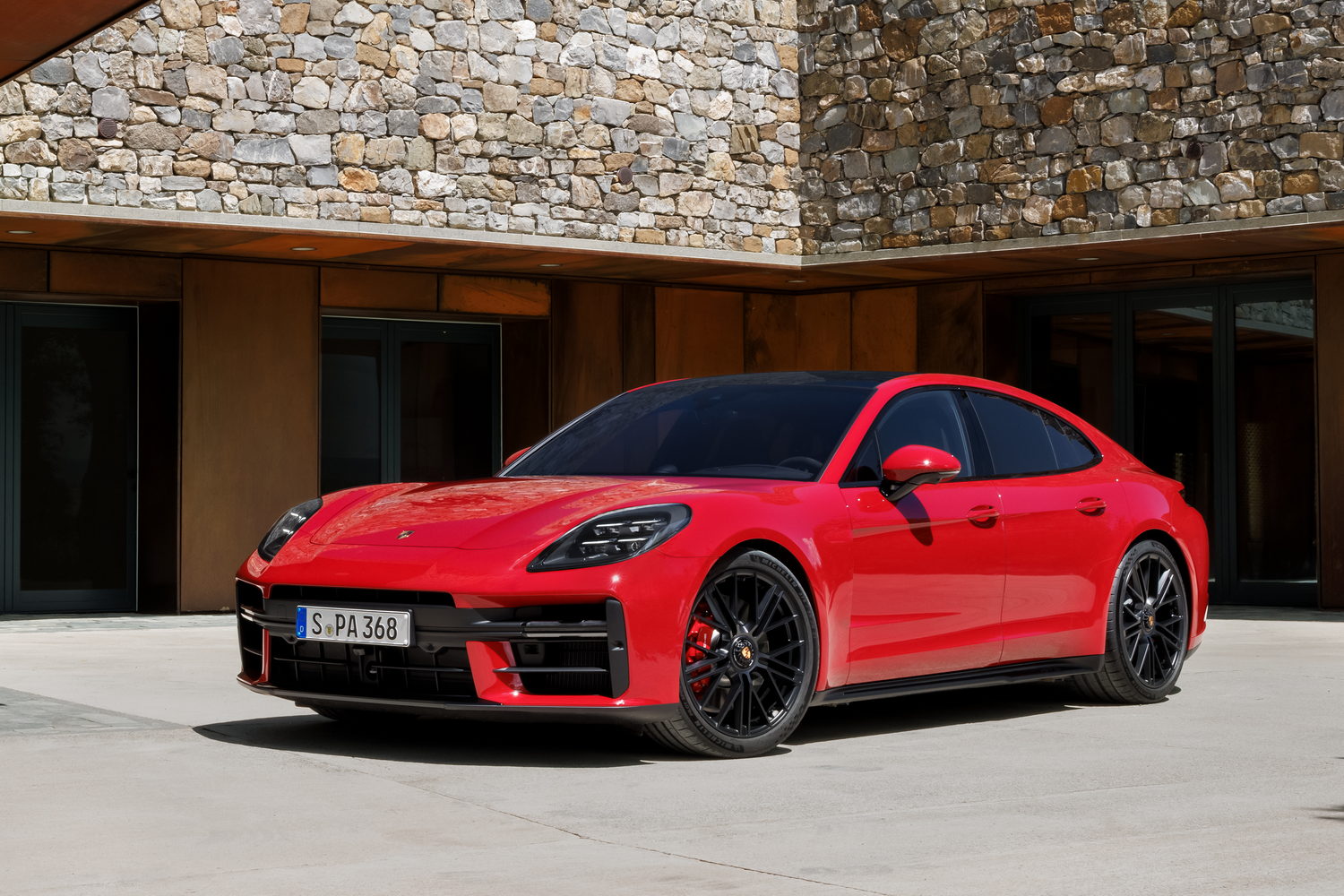While Porsche is expanding and updating its electric range with the revised Taycan and new Macan, it hasn't forgotten its combustion-engined offerings. The Panamera has been undergoing a revamp, too, and the high-performance five-door has been bolstered with the arrival of a new Turbo S E-Hybrid flagship and the sharper GTS variant.
A Turbo S is usually ludicrously powerful. Is that the case here?
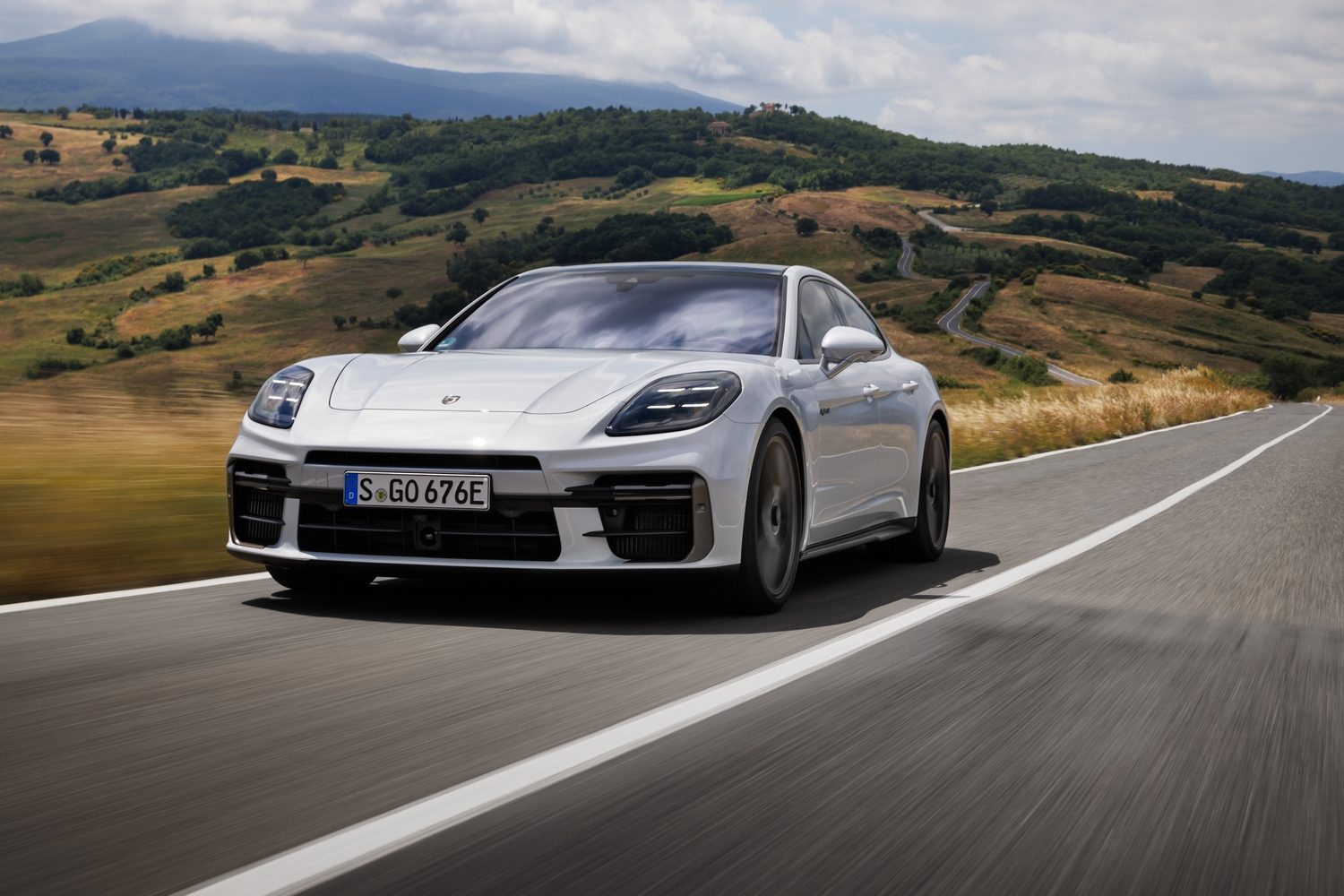
It's the flagship model, so Porsche has made it the most powerful Panamera yet, with a 4.0-litre twin-turbo V8 and electric motor - which fits entirely within the housing of the PDK twin-clutch gearbox - joining forces to make a combined 782hp peak power. That's a jump of 102hp over the previous Turbo S E-Hybrid, while peak torque has risen by 150Nm to 1,000Nm exactly.
The performance figures are as impressive as the output gains. There's a 0-100km/h time of 2.9 seconds (half a second faster than the old car), while the top speed is 325km/h.
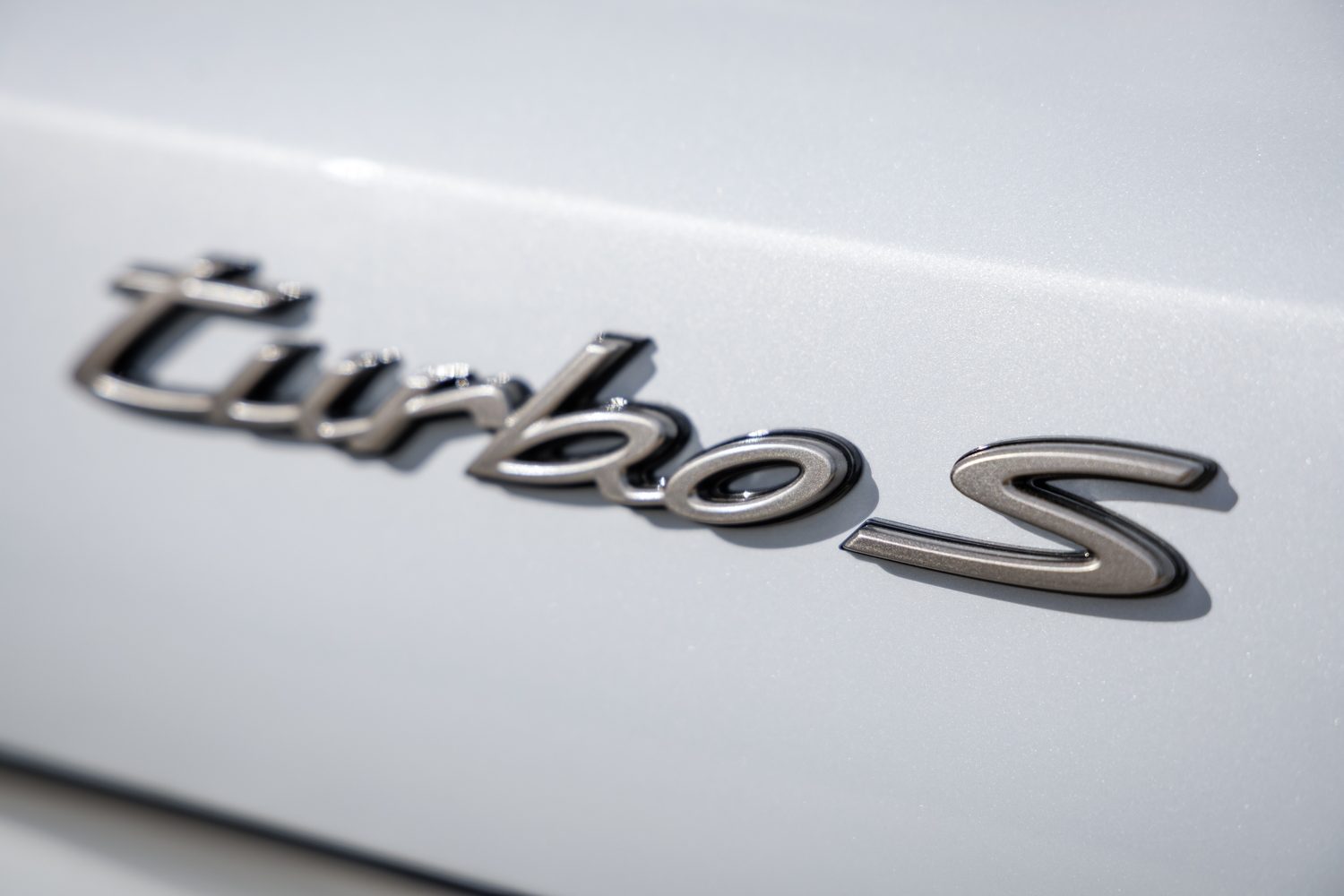
These figures are only half the story, though, because the E-Hybrid part of the Turbo S has been enhanced to deliver even greater efficiency. There's a larger battery that holds 45 per cent more energy than the old car's battery at 25.9kWh, and Porsche quotes a range of up to 88km in city driving on electric power alone (curiously, the ‘combined’ WLTP range has not been quoted in the press release). A more efficient energy recovery system recoups more power back into the battery when decelerating, while 11kW AC charging can take the battery from flat to full in two hours and 39 minutes.
How can you identify the Turbo S E-Hybrid?
There are some unique styling touches inside and out. The most obvious is the inclusion of forged 21-inch centre-lock alloy wheels in a metallic grey shade called Turbonite. This hue is also applied to the ‘airblades’ on the nose and across the rear bumper, while the quad exhaust tips are finished in dark bronze.
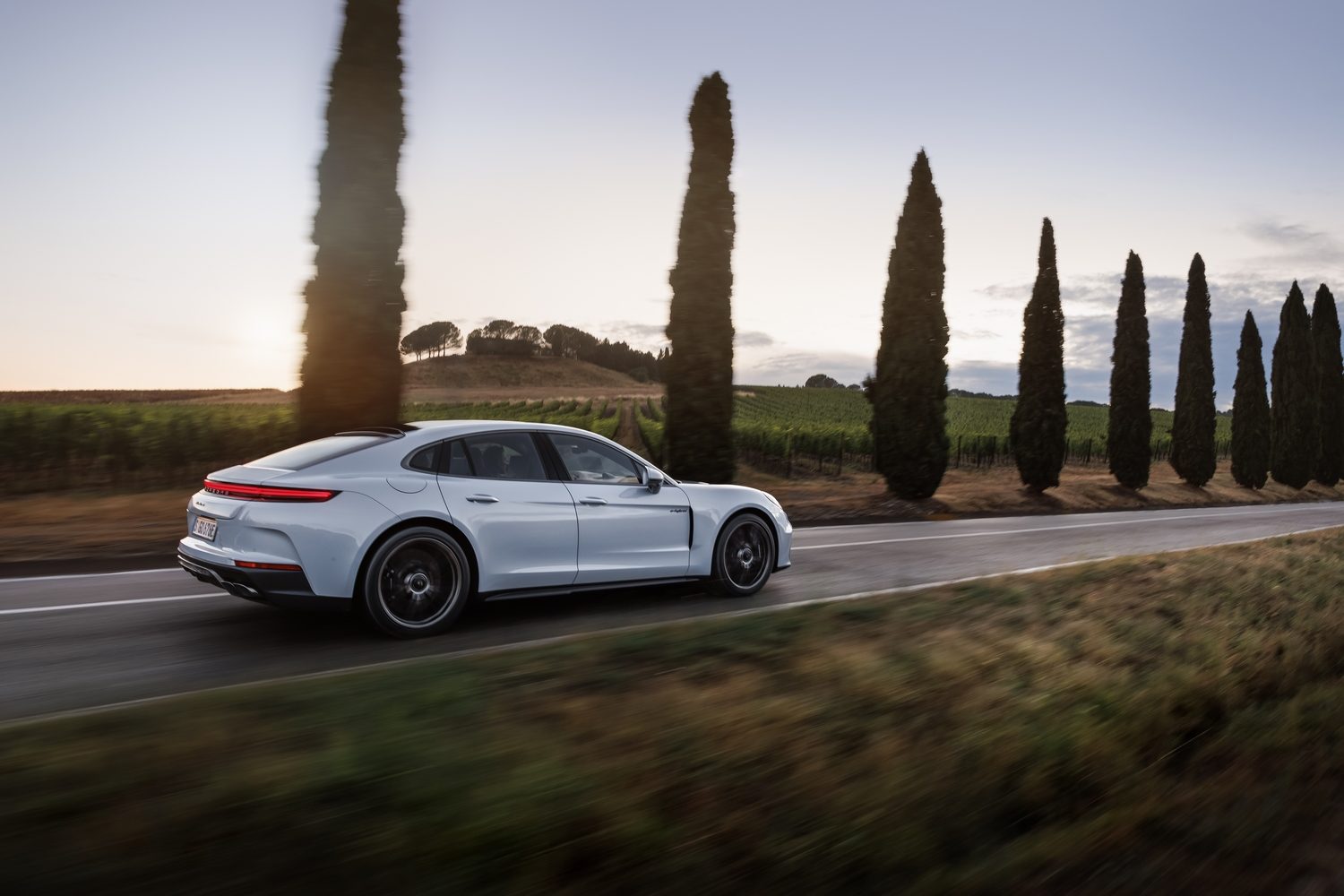
Inside, the Turbo S E-Hybrid features the Turbonite finish for the cabin trim, on the steering wheel, the stitching for the upholstery and across the centre console. The roof lining is finished in Race-Tex, which is Porsche's synthetic suede-effect trim.
Chassis tweaks include Porsche's carbon composite brake system, which comes as standard on the Turbo S. This comes with the usual PCCB yellow calipers, though acid green items can be fitted instead. Also standard is Porsche Active Ride. This system uses the E-Hybrid's 400-volt electrical system to actively control the shock absorbers at each corner to compensate for body movement.
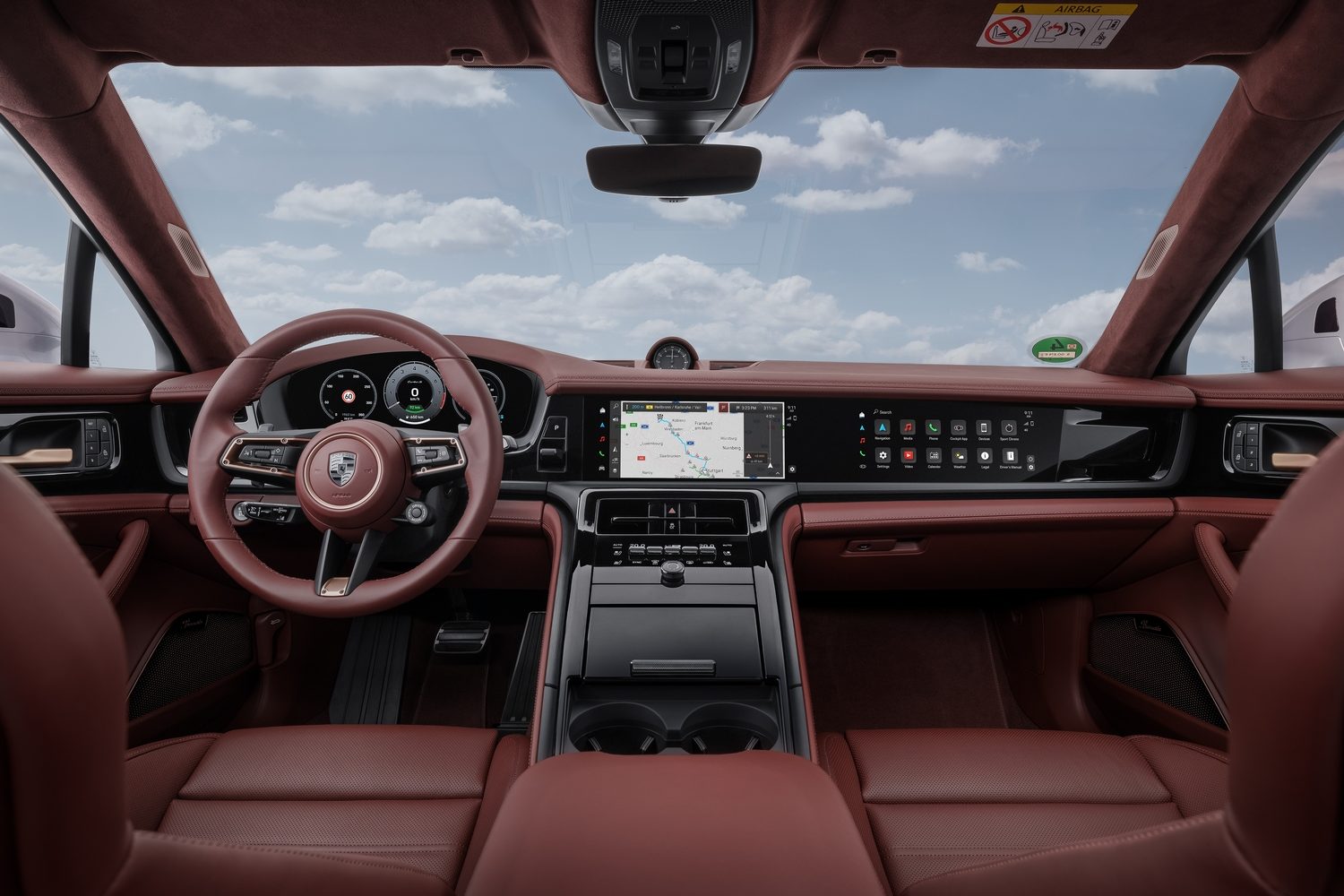
To prove the effectiveness of the new Turbo S E-Hybrid, Porsche has already taken to the Nürburgring Nordschleife to set a time. Test driver Lars Kern set a new lap record for a combustion-engined performance saloon, recording a time of 7 minutes and 24.172 seconds, beating the previous record by 3.62 seconds. The car that set the record was fitted with a Carbon Aerokit that will be available to Panamera buyers, which features airblades, side skirts and a rear diffuser finished in carbon fibre, while a front lip spoiler eliminates lift and a rear Gurney flap boosts downforce. Track-focused Michelin Pilot Sport Cup 2 tyres are also included in the package.
Comprehensive. So, what's the point of the GTS?
While the GTS uses the same 4.0-litre twin-turbo V8 as the Turbo S, it's shorn of all the E-Hybrid technology. As a result, Porsche says that it has delivered "a dynamic sports saloon that places the emotional driving experience in the foreground".
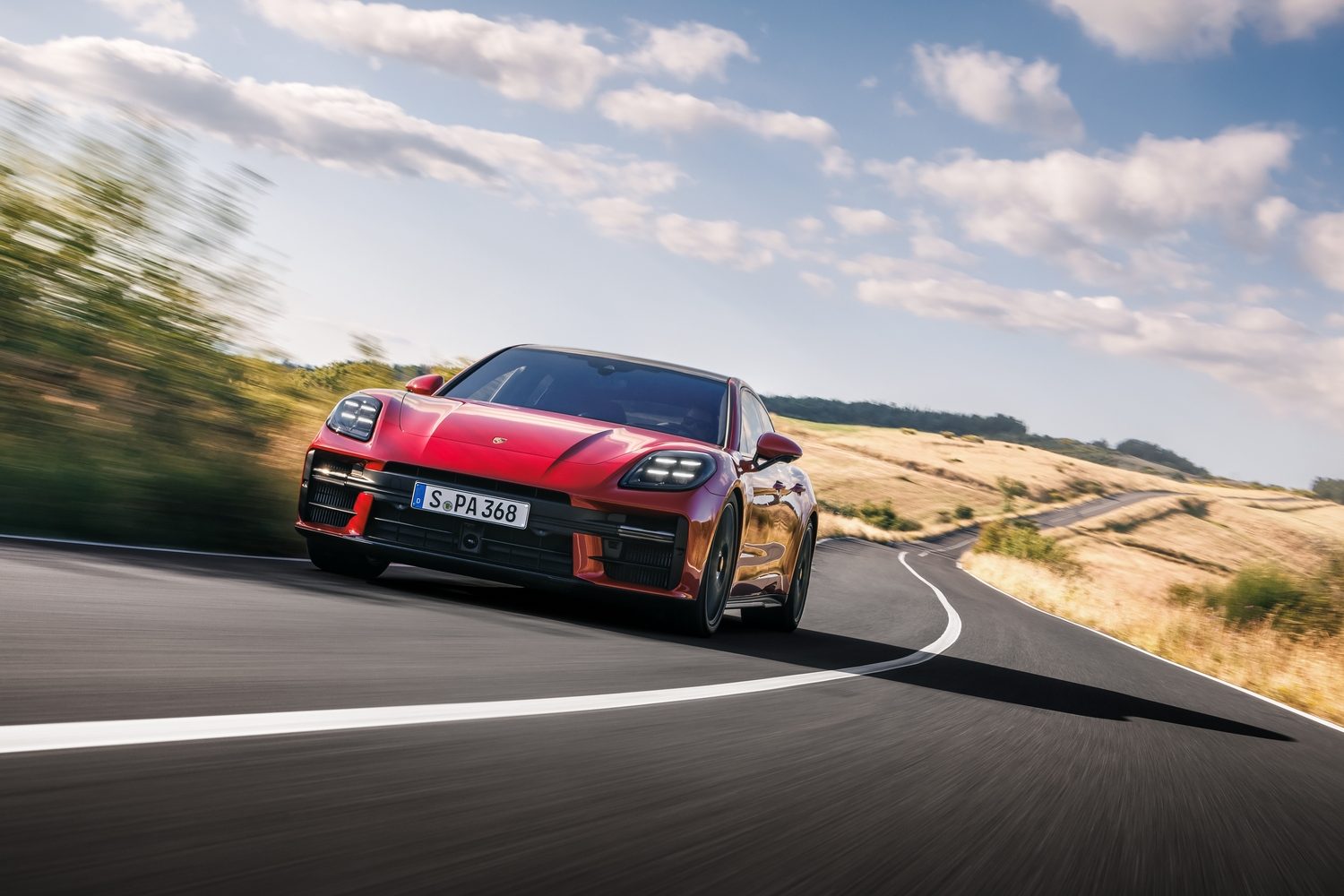
The engine has been tuned to make up to 500hp, which is 20hp more than the previous Panamera GTS, while the linear power delivery is said to be as strong past 6,000rpm as it is at lower revs. There's a 0-100km/h time of 3.8 seconds and a top speed of 302km/h, while a standard-fit sports exhaust system should deliver a suitably sporty soundtrack.
But the main focus of the Panamera GTS is the way it drives, so it receives a 10mm lower ride height, stiffer anti-roll bars and retuned two-valve air suspension. The four-wheel-drive system features Porsche's electronically controlled PTV Plus differential lock to control the torque distribution between the rear wheels, and the company claims that there isn't a significant reduction in comfort despite all the focus on the car’s cornering ability.
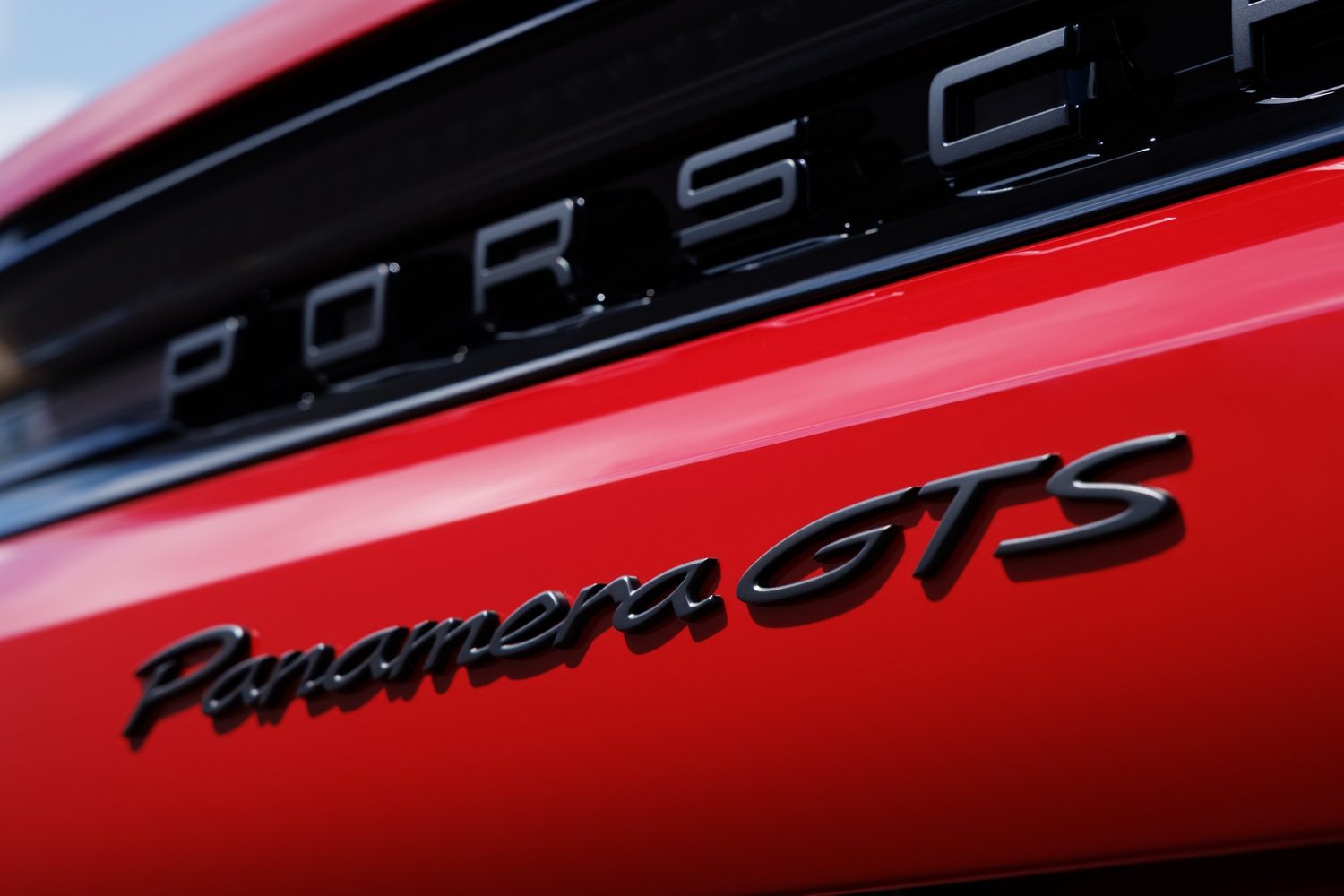
I suppose this model gets a unique look?
As with other GTS models, the Panamera features a Sport Design package that adds black GTS logos to the exterior, black inserts in the nose and dark tinted lights front and rear. There are red brake calipers, satin black exterior trim details, dark bronze exhaust tips and 21-inch centre lock wheels - like the Turbo S’s but finished in Anthracite Grey.
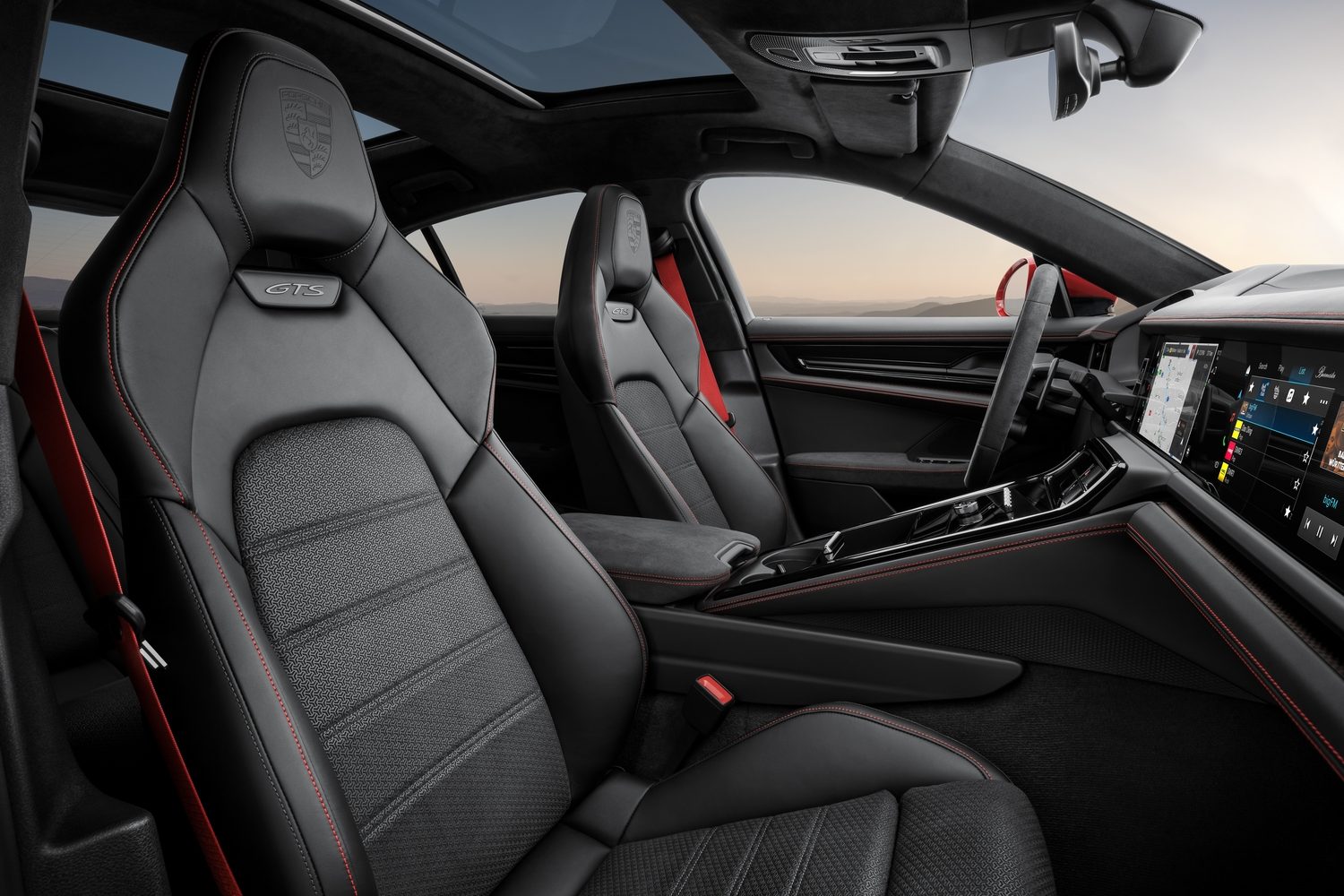
Inside, the GTS gets a generous amount of Race-Tex upholstery to signify its sporty intentions, with the material used on the roof lining, armrests, door panels and the centre section of the sports seats. Standard equipment includes the Sport Chrono package and a Bose stereo, while Slate Grey or Carmine Red interior packages can be added to enhance the cabin.
Both the Panamera Turbo S E-Hybrid and Panamera GTS are available to order now. Irish prices have yet to be confirmed, though the ultra-low emissions of the plug-in hybrid model will mean it’s likely to undercut the GTS.

